Has India truly become open-defecation free?
The home of one of the Unnao victims in Baburaha village did not have a toilet, like many other houses in the same village. Uttar Pradesh had declared itself open-defecation free in 2018. This is the situation in many other states.
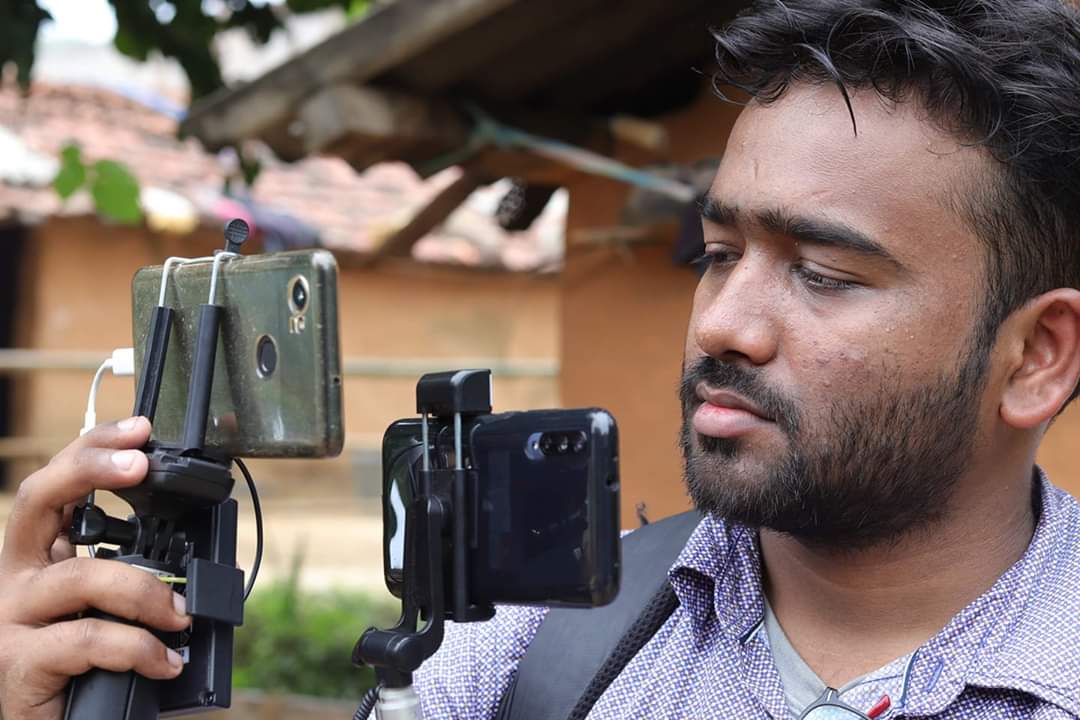
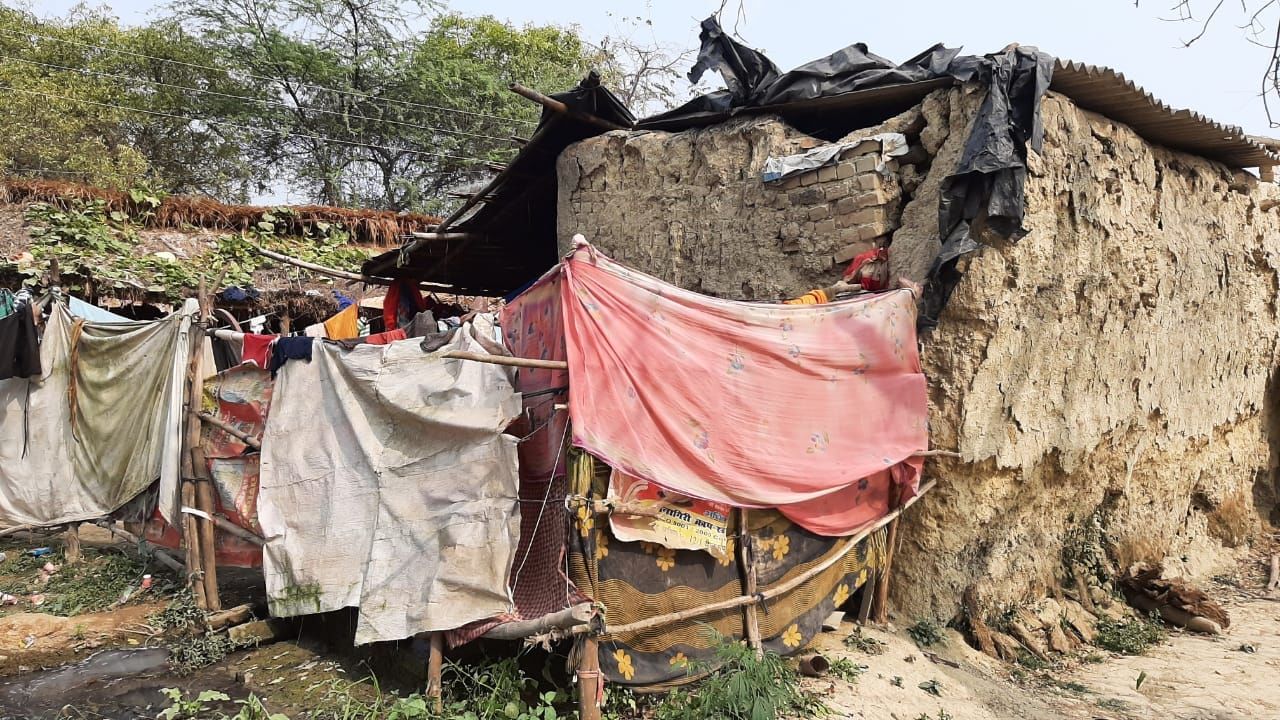
This's the toilet used by one of the two Dalit girls who died on February 17 in Unnao. Photo: Neetu Singh
Baburha, Unnao, Uttar Pradesh
Fragile mud walls, old saris used as partitions, a few bags and plastic sheets secured with bamboo and wooden sticks, and no toilet —- this is the home of one of the two Dalit girls who died while collecting fodder on February 17 in Baburaha village of Unnao district, just 40 kilometres from state capital Lucknow.

According to official statistics, Pathakpur gram panchayat under which Baburaha village falls, has been declared ODF (open defecation free). A few days before the tragic incident, the deceased had reportedly told a neighbour that she dreaded going out into the open courtyard at night to urinate. The fear of heading out to defecate in the open or the fields is common to all the girls and women Gaon Connection spoke to in the village.
The victim’s family is one of many in the village, which has about 150 houses, which are yet to get a toilet under the Swachh Bharat Mission. And those that have them say the toilets are not fit to be used. In some cases the doors are broken, in some the plumbing is gone. Many use the toilets just to bathe in.
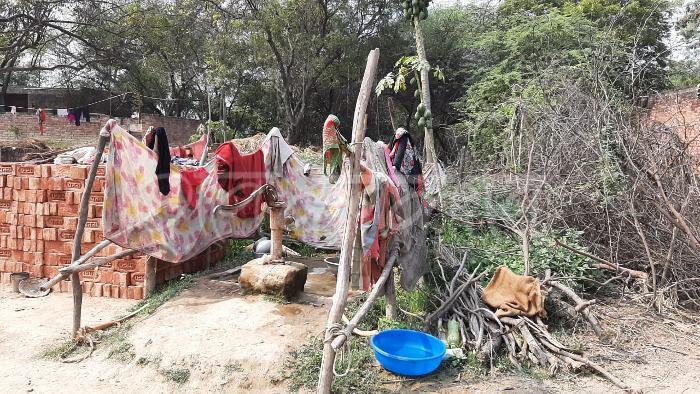
“These toilets are not fit to be used,” admitted a 40-year-old villager on condition of anonymity. “They have been built in haste to achieve targets,” he told Gaon Connection.
A woman living in the neighbourhood said that after the incident, she is afraid to send her daughter out alone. “She is twelve, and goes to the field to defecate. I think I have to accompany her henceforth.”
“Our village has been declared ODF,” Dharmendra Tripathi, former pradhan, confirmed to Gaon Connection. “Only ten per cent of the households in our panchayat do not have toilets. The panchayat has already forwarded a proposal to the administration for these houses too,” he added.
Tripathi informed that the gram panchayat has three villages under it — Pathakpur, Malakhera and Baburaha — and covers about a thousand households. Of these, 900 have toilets. Of the remaining, 30 houses belong to Dalit families, 10 of whom live in Baburaha. Half of them do not have toilet facilities, Gaon Connection found out during a recent visit.
“Although Unnao district has become open defecation free, we are surveying those who do not have toilets and are constructing them,” Rajendra Prasad, the district panchayat raj officer of Unnao district told Gaon Connection over the phone. “Among those provided toilets, between thirty and forty per cent belong to the Dalit community,” he added.
Also Read: Unnao Case: What the fields hide: The crushed dreams of Dalit girls
The Ministry of water resources, which oversees the Swachh Bharat Mission, conducted a survey in 2019-20. The National Annual Rural Sanitation Survey said that though India may have been declared open defecation free, only 94.4 per cent of households across the country have access to toilets. Of these, 79.2 per cent had individual toilets while 15.2 per cent used common or community toilets.
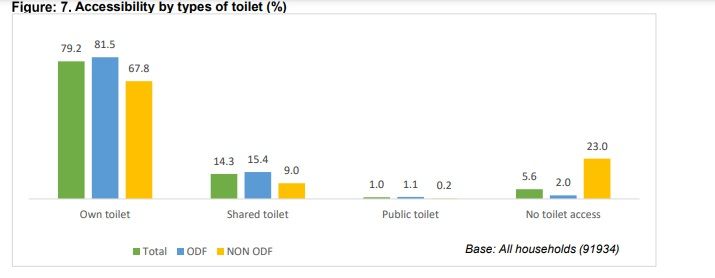
The report also said that two per cent of households in ODF villages and 23 per cent of households in non-ODF villages did not have toilet facilities. The highest number of households not having access to toilets belonged to economically and socially backward Dalit people — 91.9 per cent of Dalit families got toilets against the general percentage of 97.

Current status of Swachh Bharat Mission
The mission was launched on October 2, 2014, and on October 2, 2019, Prime Minister Narendra Modi declared the country open defecation free. According to the Swachh Bharat Mission Gramin website, all the states of India have declared themselves ODF.
According to official statistics, prior to 2014, more than 550 million people in rural India defecated in the open, as only 39 per cent of the population had access to toilets. After the launch of Swachh Bharat Abhiyan, more than 107.58 million toilets were built in rural India.
According to SBM-G website, of the 628,221 villages in India, 602,985 villages have been declared ODF, of which 599,793 villages have been officially verified.
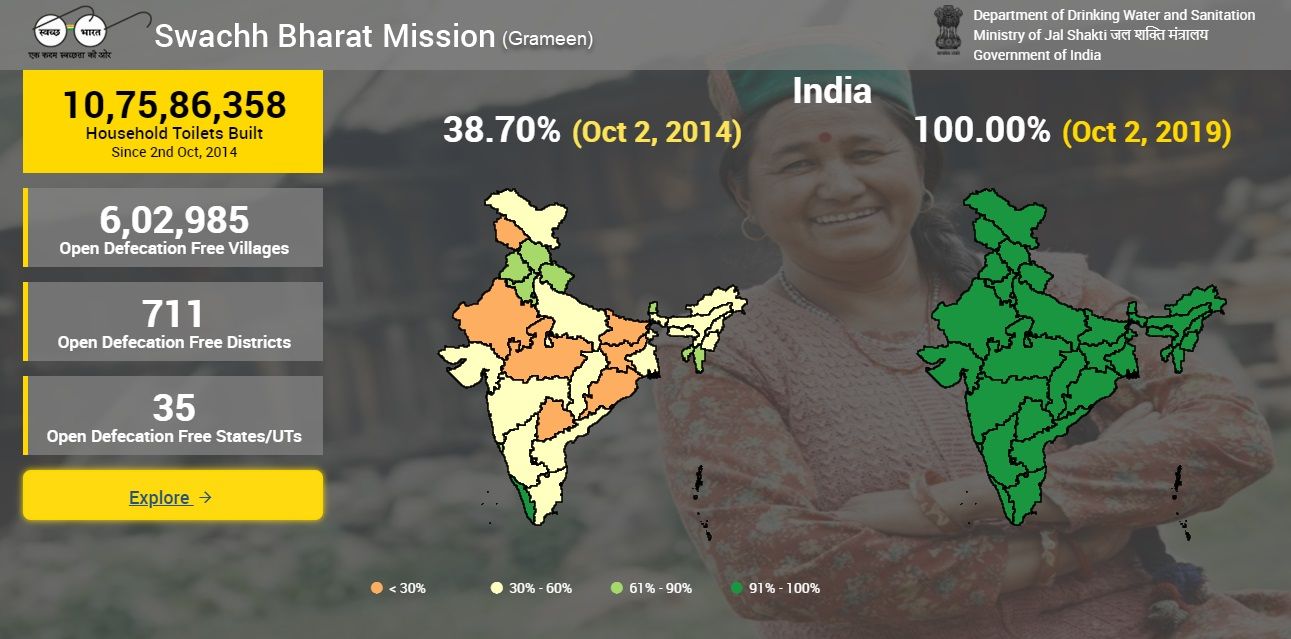
Ground Reality
As per the SBM-G website, the basis on which different districts, states and then the entire country was declared ODF was in accordance with the baseline survey of 2012. On the basis of the number of households that did not have toilets in 2012 under the survey, it was decided to provide toilets to them, to make the country open defecation free.
However, since 2012, India’s population has soared from 1.26 billion to 1.39 billion. With the increase in population, the number of households and houses also increased. The government addressed this by further conducting district-level surveys and continued to build toilets under the ODF mission.
On October 2, 2018, Uttar Pradesh declared itself open defecation free, but in October, 2019, when the Centre’s Swachh Bharat Mission ministerial team conducted a survey, 1.462 million households in the state still did not have toilet facilities. This gap existed despite the 4.4 million additional toilets built in the state above the baseline survey of 2012. This is the situation across the country.

Between July and December, 2018, the Union ministry of statistics conducted a National Sample Survey (NSS) on drinking water, sanitation, wellness and residential status in India. The official survey found out that only 71.3 per cent of rural households in India had access to toilets, at a time when the Swachh Bharat Mission website was claiming more than 95 per cent of households in India have been provided toilets. It claimed 99.63 per cent of households in Uttar Pradesh were provided access to toilets by October 2018. However, NSS data revealed only 52 per cent of households had access.
There was a gap between the two sets of data for states such as Gujarat, Maharashtra, Rajasthan, Madhya Pradesh and Tamil Nadu too.
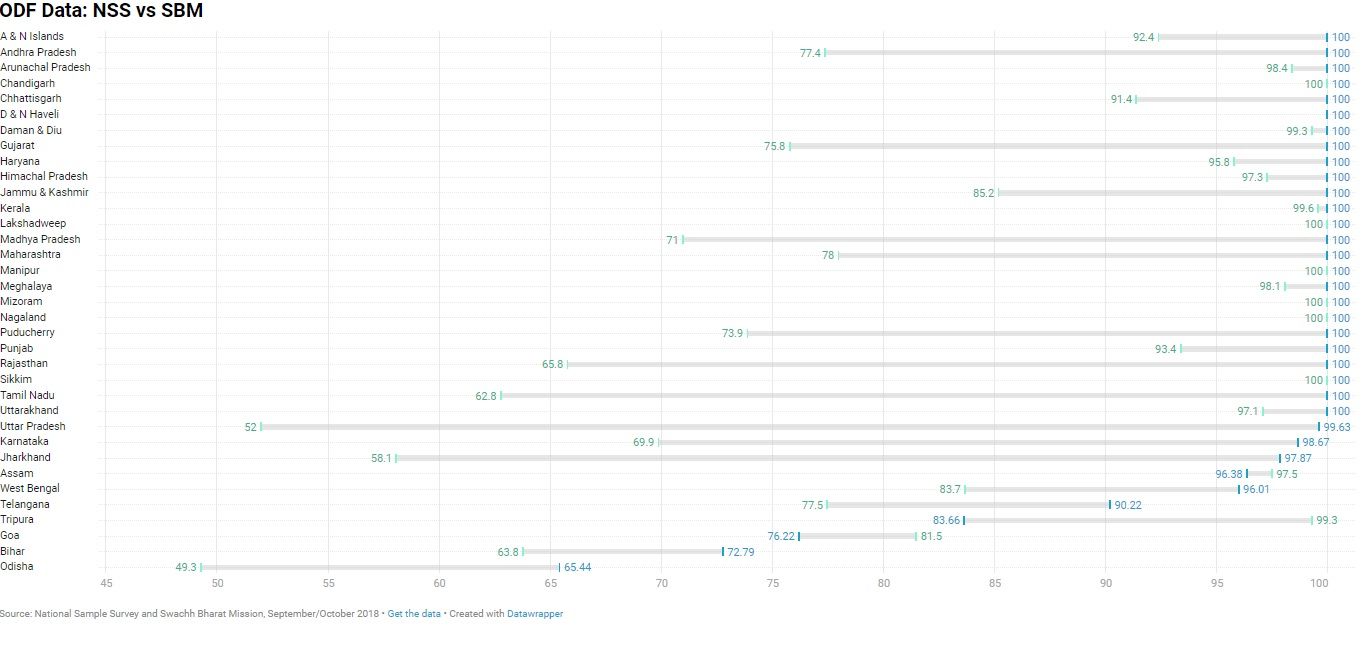
The 15-year-old girl who died lived in a mud house with a black plastic thatch, and an enclosure made of saris, where she would bathe. Her grandparents did not have a toilet at home, though her father’s household (he remarried after her mother died) had one.
“Although we have a toilet at home, we only use it for bathing. Sometimes, our daughter also bathed here,” said the stepmother of the deceased girl. “There is no private bathing area in the house, so we bathe here and head to the fields to defecate,” she added.
The sister-in-law of the 17-year-old deceased girl has fashioned an enclosure from old saris to serve as a makeshift toilet. She told Gaon Connection: “We had requested pradhanji several times for a toilet, but he always said he’d give it to us when they have funds. We use the enclosure to urinate at night. Our house is by the road, so anyone can jump in. We do not have the means to build the toilet on our own,” she added.
The gram pradhan’s reply is that he was not aware they did not have a toilet. “We forward all requests and when toilets are sanctioned, we provide them. We have built about five hundred and fifty toilets in the last eighteen months,” he told Gaon Connection.

